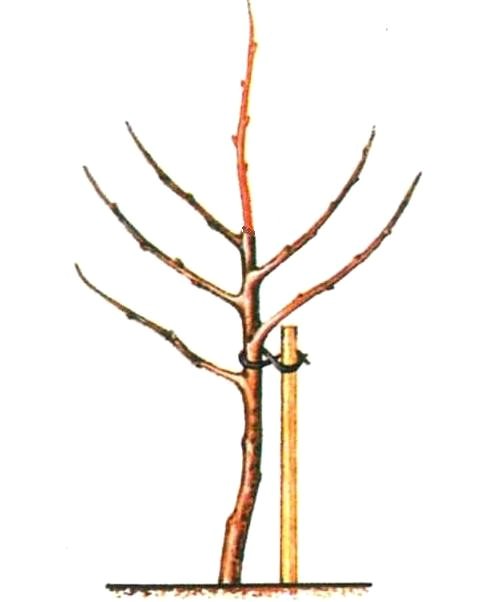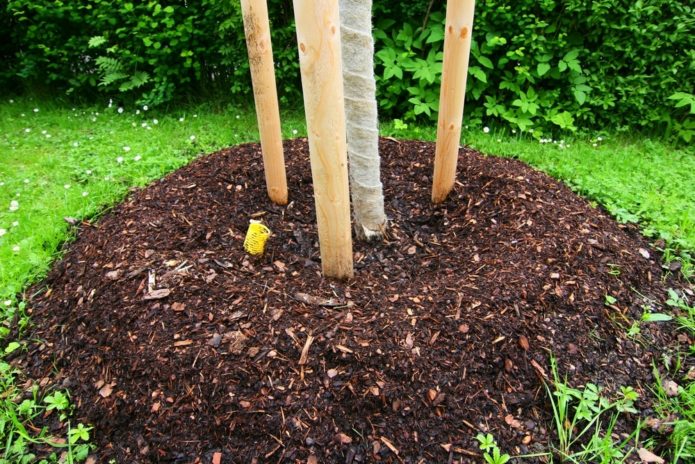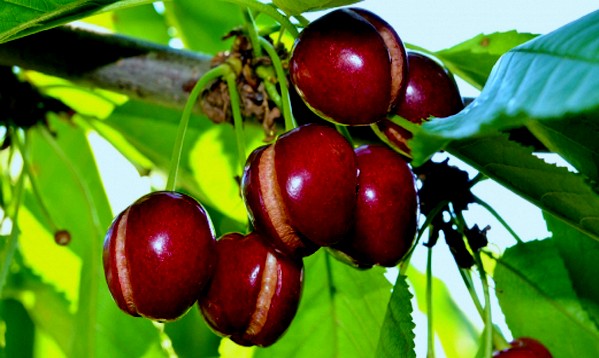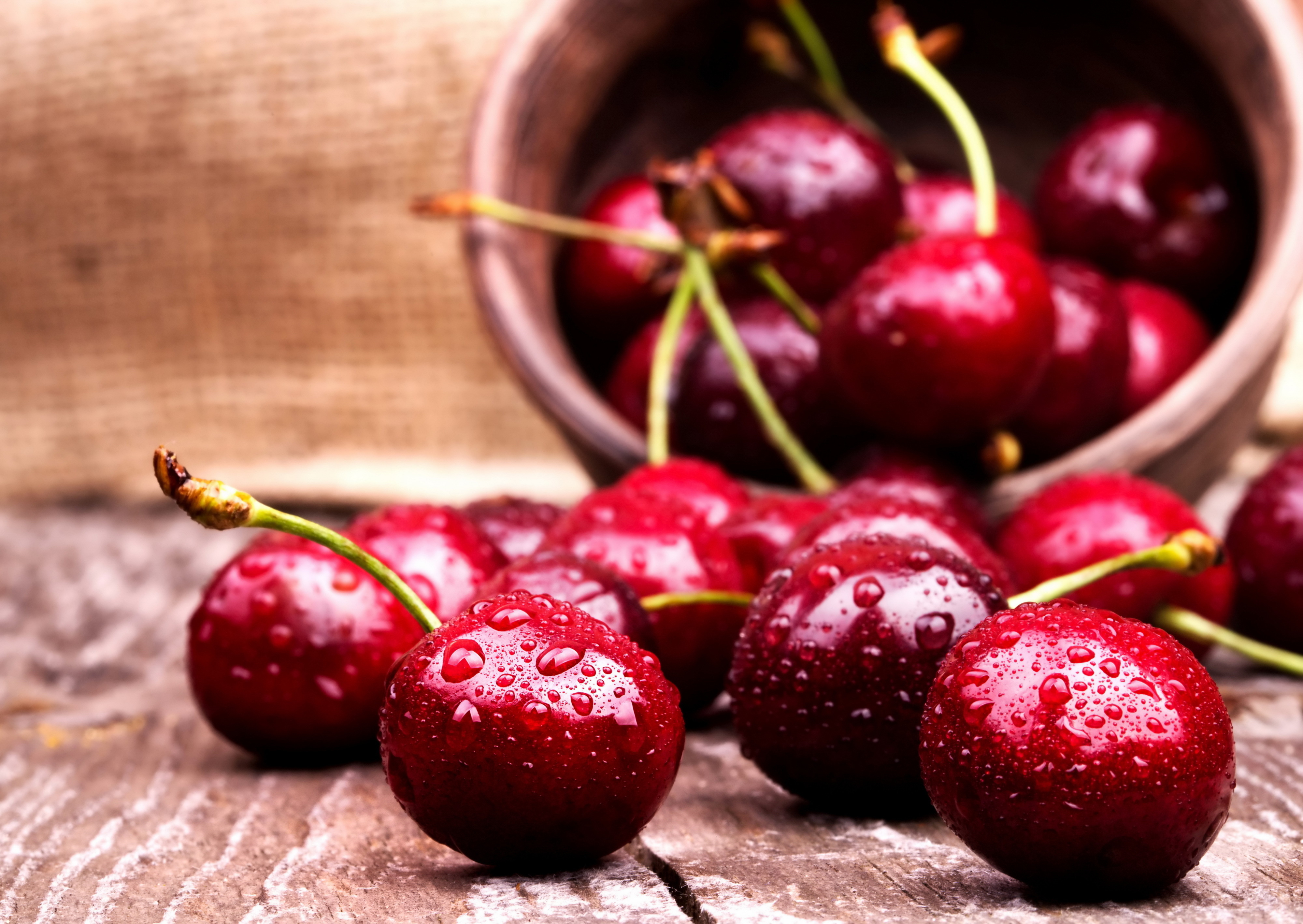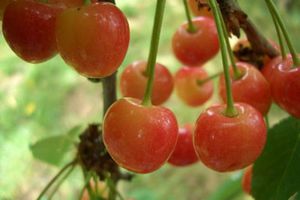Cherry Leningrad black in its name carries a message about what it is: winter-hardy and intensely dark, almost black in color. The variety fell in love with gardeners for its resistance to diseases and the ability of the crop not to fall after ripening, delighting lovers with juicy sweet fruits for a long time.
Content
History and description of the Leningradskaya black cherry variety
The expansion of the zone of growth and cultivation of sweet cherries led to the fact that at the end of the last century at one of the oldest stations, the Pavlovsk Experimental Station of the All-Union Scientific Research Institute of Plant Industry named after V.I. NI Vavilov, on the basis of the richest collection of fruit and berry crops, the Leningradskaya black cherry variety was created.
The tree is of medium height, with a not very leafy spreading crown. Leaves with an elongated base, oblong-oval, large, dark green.
Leningrad black berries belong to the bigarro group: medium-large, round-heart-shaped, dense, with a slightly fibrous pulp, sweet, juicy, with a characteristic tart flavor. The average weight of the berries ranges from four grams, the skin color is dark red to black. The berry is easily separated from the petiole, but the stone is firmly connected to the pulp.
The fruits of the Leningrad black cherry are well transported due to their dense pulp. They are eaten fresh, in preparations, used for the preparation of liqueurs and wine.
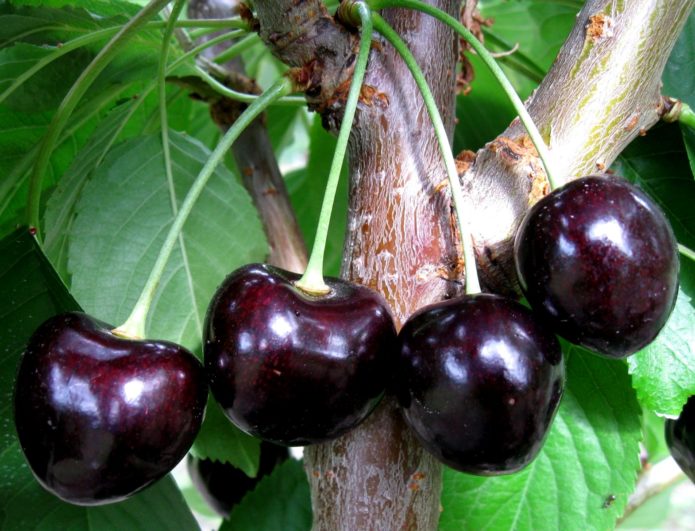
Rounded heart-shaped berries are distinguished by their dark red, almost black color and sweet juicy pulp
This variety is characterized by a medium-late extended ripening of berries. Fruiting begins in the second half of July and lasts until the second decade of September. The berries hang on the tree for a long time, do not fall off after ripening and do not lose their taste.
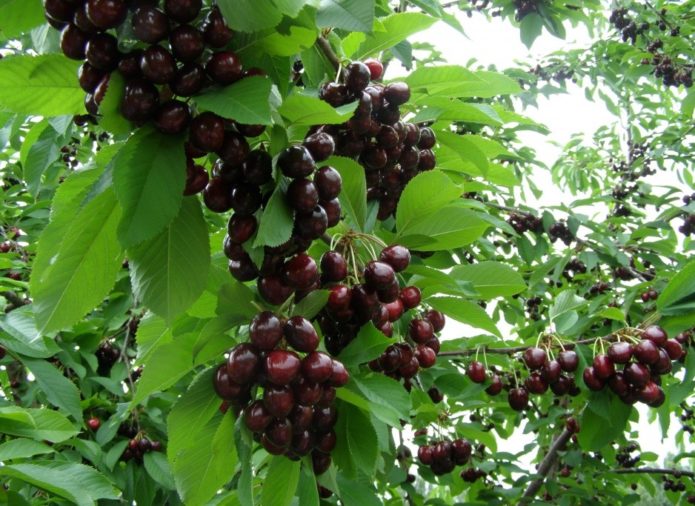
Despite the extended ripening, the berries of the Leningrad black cherry do not fall off, but hang on the tree for a long time
After planting, the sweet cherry begins to bear fruit in two to three years. The yield is stable and high. With the correct selection of the pollinator, up to forty kilograms of berries are harvested from one adult tree. The variety is not self-fertile. Cherry Leningrad black is characterized by high frost resistance and disease resistance.
Landing features
Cherry of this variety prefers to grow on slightly acidic or neutral light fertile soils. With a close occurrence of groundwater, it is recommended to plant trees on an embankment in order to ensure that they are at least one and a half to two meters away from aquifers.
It is advisable to protect the landings from the northern cold winds. Most often, trees are planted near brick buildings. During the day, the wall heats up, and at night it gradually gives off heat, protecting the seedlings from sudden changes in temperature. When planting in acidic clay areas, it is recommended to prepare planting holes in the fall, adding 3-5 kilograms of dolomite flour in advance for deoxidation and about the same amount of sand to improve the texture of the soil.
Pollinators
They are determined in advance with the planting site, taking into account the self-infertility of the variety.Pollinating trees should grow in the garden at a distance of no more than 40 m from Leningradskaya black.
It is noticed that if cherries and sweet cherries grow nearby, then the harvest becomes more generous on those and other trees.
To obtain a stable harvest, producers offer their own varieties as pollinators that coincide in terms of flowering: Leningradskaya pink cherry and Leningradskaya yellow cherry. Universal pollinators for cherries do not lose their relevance:
- Iput,
- Veda,
- Zorka,
- Jealous.
Experienced gardeners suggest, if there is not enough space on the site, to use grafting of different varieties on one stock.
Planting process
If you need to plant several trees of Leningrad Black, then there should be at least three meters between them. To prepare for planting in the fall:
- They dig a hole 80x80x70 cm in size.
- The clay layer is removed.
- The top fertile soil is mixed with rotted manure, peat or compost in equal proportions.
- At the bottom of the drainage pit, crushed limestone is poured to a quarter of the pit height.
- The soil mixture is mixed with dolomite flour and sand, and poured into the pit.
- Cover the pit surface until spring.
In the spring, they start planting:
- A recess is made in the planting pit corresponding to the height of the container with the seedling.
- Secure the landing peg.
- Remove the seedling from the container carefully to keep the earthy ball.
- Set the tree in a hole so that the root collar rises 5-6 cm above the soil level.
- They fill up the hole, compact the soil around the trunk and form an irrigation hole.
- Water abundantly and tie the seedling to a peg.
- The trunk circle is mulched.
Video: planting cherries
Cherry care
When caring for cherries, it is necessary to take into account the peculiarities of the Leningradskaya Black variety: a spreading crown and a ripening of the crop extended in time.
Pruning
Immediately after planting, the first pruning is carried out, shortening the bole at a height of 60–65 cm. This stimulates the formation of lateral skeletal shoots, which will further facilitate harvesting. Further pruning is carried out in order to create a sparse-tiered crown, which will provide better illumination of the branches and limit the height of a medium-sized tree. After the final formation of the crown, when pruning, weak, sick, injured, growing inside the crown, rubbing and crossing branches are removed.
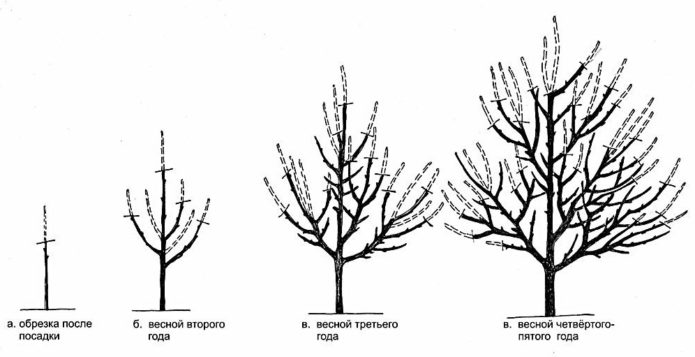
The formation of a sparse-tiered crown is completed in 4–5 years, removing the upper part of the central conductor above the last skeletal branch at a height of 3.5–4 m from the ground
Watering and mulching
Cherries need to be watered regularly, but in moderation. Excessive watering can lead to stagnant water and root rot. In addition, water displaces air from the soil, and oxygen is necessary for the roots for normal life no less than water. The need for watering is judged by the condition of the soil under the mulch.
Some gardeners believe that after the harvest is ripe, cherries should not be watered, as this will lead to cracking of the berries. For others, fruit cracking occurs due to irregular watering.
In the case of the Leningrad black cherry, watering cannot be stopped, since its fruiting is extended. It is better to closely monitor the condition of the soil and regularly provide planting with water, depending on the weather conditions and the needs of the tree. The main recommendations for watering: add 5-7 buckets of water during flowering and ovary formation, do not forget to water abundantly after harvest and 3-4 weeks before the expected frost to prepare the trees for winter.
In the spring, when the earth warms up, the trunk circle is covered with any organic material: needles, straw, peat, humus, sawdust, crushed tree bark, withering mowed grass. Mulch protects the roots from overheating, prevents excessive evaporation of water, suppresses the growth of weeds in the near-trunk circle and gently replenishes moisture and organic compounds when the greens overheat. What remains of the mulching material in late autumn is mixed with the soil with a hoe.
Top dressing
If a sufficient amount of organic matter is introduced into the planting pit, then for the next 3-4 years you can forget about further fertilizing. And if you make a rule before winter, mulch the tree trunk circle with rotted compost, horse manure or humus, and in the summer you practice adding ash to mulch, you can be sure of the harvest. When applying mineral fertilizers, the following principles are adhered to: nitrogen fertilizers are applied in the spring, phosphorus and potash fertilizers throughout the season. Phosphorus salts are usually added twice as much as nitrogen or potassium.
Agronomists with extensive experience do not recommend getting carried away with the introduction of mineral fertilizers without specifying the real mineral composition of the soil in their area.
Disease prevention and preparation for winter
Trees that have developed good immunity as a result of proper care usually do not get sick and are resistant to adverse environmental factors. For young seedlings, the first winters are especially important, when, in addition to cold weather, hares, devouring young shoots and trunks, are dangerous. For protection, it is recommended to tie the seedlings with thick paper bags, corrugated cardboard or spruce branches. In the future, you need to whitewash the trunk and the main skeletal shoots to protect against frost damage.
The Leningradskaya black variety is considered resistant to disease, but experienced gardeners recommend in early spring for prevention to process cherry plantings with Bordeaux liquid (100 g per 10 L of water), copper sulfate (100 g per 10 L of water) or urea (700 g per 10 L of water) ...
You can not leave fallen diseased leaves under the tree, especially put them in compost.
Harvest preservation
The experience of many years of gardening convinces us that birds quickly get used to the bright discs, scarecrows and dummies of birds of prey hanging on the branches. The fruits of the Leningrad black cherry tree hang for a long time, therefore, to preserve the harvest, you should take care of covering the crown with a net.
Video: how to save crops with a grid
Variety reviews
Cherry Leningrad black seems to be zoned for the southern regions of the Leningrad region, only friends of the Luga have been growing for 10 years, but there are no berries, it blooms, the berries are sometimes tied, and then everything falls off.
Quote (galinka1970 @ 27.9.2012, 23:07) Leningrad black Plain sweet cherry.
The main advantage is high winter hardiness. A variety bred at the Leningrad Experimental Station VIR. Fruits are rather large, black-cherry in color, with a typical cherry flavor, slightly spicy. It bears fruit better when pollinated by another variety.
ps In the spring I planted 2 pcs. While alive.
Cherry Leningrad black I had everything from the same Pavlovsk. There, experts advised me as a pollinator, the same variety Leningradskaya Krasnaya. Darevets got accustomed well, but I did not wait for the berries. In the frosty winter of 2002-2003, they froze out. More, until I experimented. But they also had Leningrad pink. Also advised as a pollinator.
Christmas tree! Look at F.K. Teterev - a breeder of St. Petersburg cherries and not only her - the house was in Vyritsy. It's probably far from you. His trees just broke from the cherry harvest. This is what my predecessor and magazine mentor Galina Petrovna Lenskaya told me. She was visiting him.
For those gardeners who are able to patiently and anxiously grow their garden, Leningrad black cherry will give the charm of shiny berries and noble astringency of taste.

